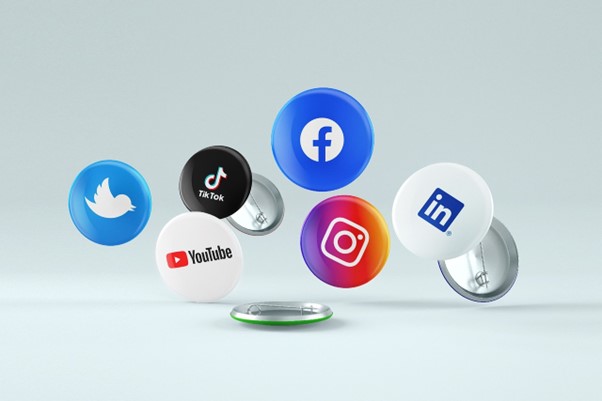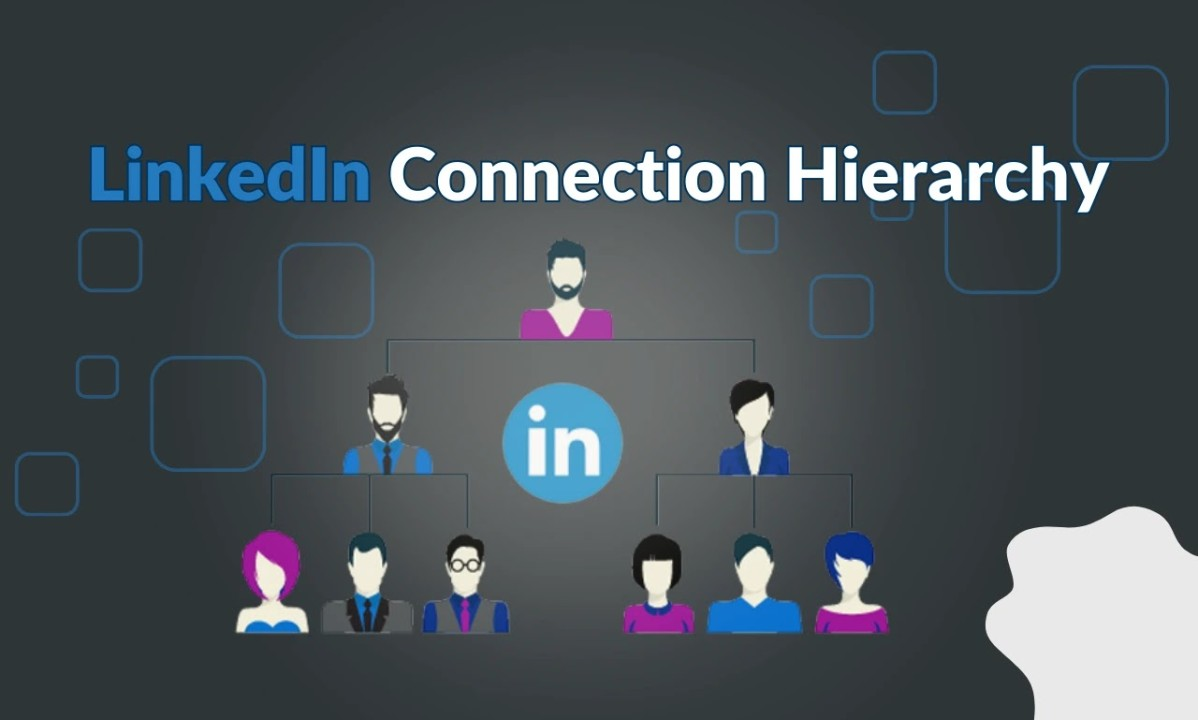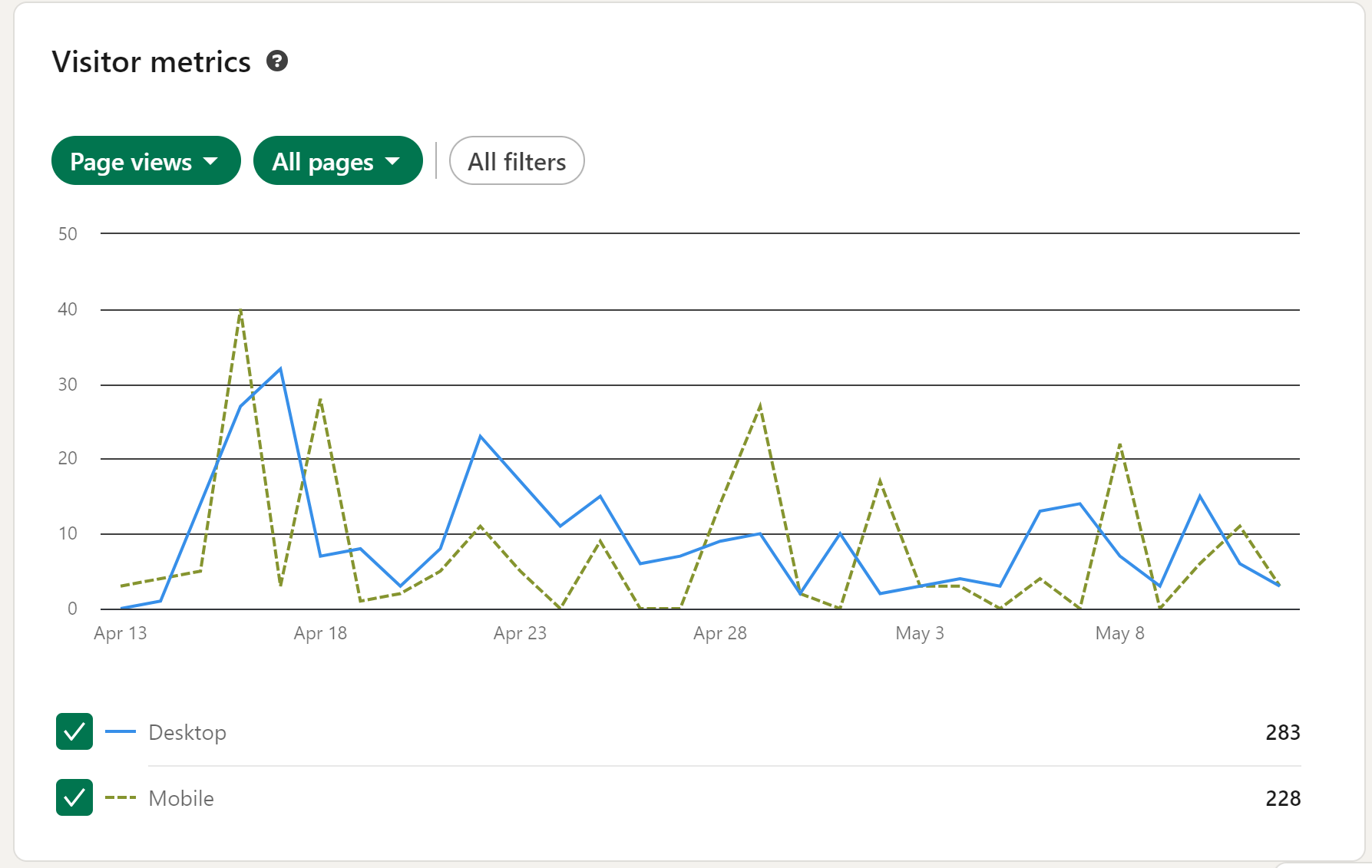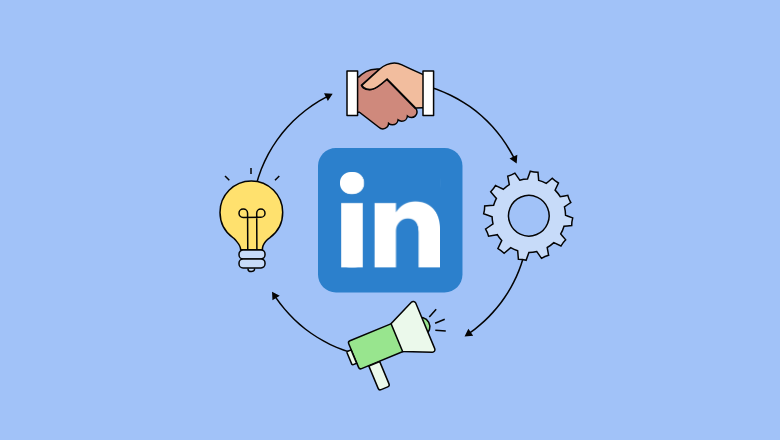13 min to read
At Codedesign, we’ve developed a set of targeted strategies that managed services companies can implement to leverage LinkedIn effectively and distinguish themselves from their competitors. By capitalizing on these techniques, businesses can optimize their LinkedIn strategy to drive engagement and generate leads.

Optimizing Company Profile and Content Strategy
A well-crafted LinkedIn profile serves as managed services companies' virtual storefront. It's essential to optimize this profile by providing comprehensive information about the company's offerings, industry expertise, and unique value proposition. Utilizing relevant keywords in the company description and headline can enhance visibility in LinkedIn searches, making it easier for potential clients to discover the business.
Moreover, a strategic content strategy is paramount for engaging the target audience and positioning the company as a thought leader in the managed services sector. Sharing insightful articles, case studies, and industry reports not only demonstrates expertise but also fosters trust with potential clients. Additionally, leveraging multimedia content such as videos and infographics can help convey complex concepts in a visually appealing manner, further capturing the attention of LinkedIn users scrolling through their feeds.

Optimizing a LinkedIn Company Profile and creating a strategic content plan are crucial steps for enhancing your brand's professional presence and engagement on the platform. Here's a step-by-step guide on how to achieve this, including some insights on how we've approached this with clients at Codedesign.
Step 1: Optimize Your LinkedIn Company Profile
- Update Company Information: Ensure all company information is current, including the website URL, industry, company size, and location. An accurate and complete profile increases your visibility in search results.
- Professional Branding: Use high-quality images for your profile and cover photos. Ensure these images are consistent with your brand identity and values. Your logo should be clearly visible in the profile picture.
- Compelling About Section: Write a clear and engaging description of what your company does, its mission, and what sets it apart from competitors. Utilize keywords relevant to your industry to improve SEO.
- Showcase Pages: Create LinkedIn Showcase Pages for different segments of your business to target specific audiences with tailored content.
- Regular Updates: Keep your company information and content up-to-date. Regular updates signal to visitors that your company is active and engaged.
Step 2: Develop a LinkedIn Content Strategy Plan
- Define Your Goals: Determine what you want to achieve with your LinkedIn content. Goals might include generating leads, enhancing brand recognition, or establishing thought leadership.
- Understand Your Audience: Analyze your target audience's characteristics, including job titles, industries, and professional challenges. This understanding will guide your content creation.
- Content Calendar: Plan a content calendar to schedule regular posts. This should include a mix of content types like articles, videos, company news, and curated content relevant to your audience.
- Engagement Plan: Encourage engagement by asking questions, inviting feedback, and participating in conversations. Engagement can further increase your visibility and brand credibility.
- Performance Metrics: Set up metrics to measure the success of your content. LinkedIn analytics can provide insights into engagement rates, reach, and the effectiveness of different content types.
- Regular Review and Adjust: Regularly review the performance of your content and strategy. Be prepared to adjust your plan based on what content performs best and the evolving interests of your audience.
Pros and Cons of LinkedIn Content Strategy
Pros:
- Targeted Professional Audience: LinkedIn's environment is professional, making it ideal for B2B marketing and building business relationships.
- Increases Visibility: A well-maintained LinkedIn profile and active content strategy can significantly increase your brand's visibility and credibility in your industry.
- Lead Generation: LinkedIn allows for precise targeting, which can be highly effective for lead generation campaigns.
Cons:
- Resource Intensive: Creating high-quality, engaging content consistently requires time, effort, and resources.
- Slow Build: Building a substantial following and achieving high engagement levels can take time.
- Limited Reach Without Ads: Organic reach on LinkedIn can be limited without the use of paid promotions, which may be necessary to reach a broader audience.

Meaningful Connections and Engaging with the Community
LinkedIn is not just a platform for self-promotion; it's a vibrant community where professionals exchange ideas, insights, and opportunities. Managed services companies can leverage this by actively participating in relevant LinkedIn groups and industry forums. Engaging in discussions, sharing valuable insights, and offering solutions to common pain points can establish the company as a trusted authority within the community.
Furthermore, building meaningful connections with prospects, clients, and industry influencers is key to expanding the company's network and fostering long-term relationships. Personalized connection requests accompanied by a brief message expressing genuine interest in connecting can significantly improve acceptance rates. Once connected, regularly engaging with connections by liking, commenting, and sharing their posts demonstrates active participation in the LinkedIn community and keeps the company in mind.
Creating meaningful connections and engaging with your community on platforms like LinkedIn can lead to increased visibility, trust, and opportunities for professional growth. Here are five tips to effectively build and maintain these connections:
Personalize Connection Requests
When you send a connection request, always include a personalized message. Mention how you met the person, refer to a recent post of theirs you found interesting, or explain why you’re interested in connecting. This personal touch shows that you are genuinely interested in them as an individual, not just adding numbers to your contact list.
Share and Comment Thoughtfully
Regularly share relevant and high-quality content that adds value to your network. This could include articles, insightful commentary, industry news, or updates about your professional life. When you comment on posts, be thoughtful and constructive. This demonstrates your knowledge and can spark meaningful conversations that make your profile memorable.
Join and Participate in Groups
LinkedIn groups are a great way to meet new people who share your professional interests. Join groups related to your industry or professional interests, and actively participate in discussions. This can help you establish your expertise and meet like-minded professionals. Don’t just observe; post questions, offer advice, and share relevant content to engage actively with the group members.
Host and Participate in LinkedIn Live Sessions
LinkedIn Live provides an excellent opportunity to engage in real-time with your network. Hosting a session about an industry topic, a recent trend, or lessons from your professional experiences can attract a larger audience. Additionally, participating or commenting in other live sessions can increase your visibility and connect you with others interested in similar topics.
Recognize and Celebrate Others
Congratulate your connections on their professional milestones, such as promotions, new jobs, or work anniversaries. Share their accomplishments with your network when appropriate. This not only strengthens your relationships but also encourages a positive community spirit where support and recognition are mutual.
In a recent campaign for a client focused on building community engagement, we implemented a strategy of hosting monthly webinars featuring various industry experts. Each session included a Q&A segment, which was promoted across LinkedIn. This approach not only increased our client's visibility as a key player in their industry but also significantly enhanced their reputation as a source of valuable information. The client's network grew more robust due to these interactions, showcasing the power of engaging content and community participation in building meaningful connections.
Harnessing Client-Centric Solutions

Client-centricity reigns supreme. Managed services companies can distinguish themselves on LinkedIn by highlighting their commitment to delivering tailored solutions that address the unique needs and challenges of their clients. Emphasizing a client-first approach throughout their LinkedIn presence, from company updates to client success stories, demonstrates an understanding of the importance of aligning services with client objectives and outcomes. By showcasing how their offerings consider professional managed IT services, companies can reassure potential clients of their dedication to providing value-driven solutions that prioritize client satisfaction and long-term partnerships. This focus on client-centricity sets managed services firms apart from competitors and positions them as trusted advisors capable of delivering results that directly impact their clients' businesses.
Showcasing Client Success Stories and Testimonials
One of the most effective ways for managed services companies to build credibility and trust on LinkedIn is by showcasing client success stories and testimonials. Potential clients are more likely to trust a company that can demonstrate tangible results and positive feedback from satisfied customers. Sharing case studies highlighting specific challenges faced by clients and how the company successfully addressed them can resonate with prospects facing similar issues.
Additionally, featuring client testimonials or endorsements on the company page adds social proof and reinforces the company's reputation for delivering exceptional service. Encouraging satisfied clients to leave recommendations on the company page or write LinkedIn posts sharing their positive experiences can further amplify the company's credibility and attract new business opportunities.

Showcasing client success stories and testimonials on LinkedIn is a powerful way to build credibility and trust with your audience. These elements highlight your company's ability to deliver results, satisfying customer needs, and generally enhancing your brand's reputation. Here’s a step-by-step guide to effectively feature these elements on LinkedIn, along with an example from Codedesign's approach.
Step 1: Collect and Organize Testimonials
- Request Feedback: After successful project completion, ask clients for feedback. Make it easy for them to provide testimonials by suggesting specific questions or a short form.
- Permission to Share: Always get explicit permission to use their feedback publicly, specifying that it will be used for marketing purposes on platforms like LinkedIn.
- Organize Testimonials: Keep a well-organized repository of all client testimonials. Categorize them by industry, service provided, or client size to easily find the most relevant ones for different purposes.
Step 2: Create Compelling Content
- Story Format: Turn client testimonials into compelling stories. Begin with the client's challenge, describe your intervention, and end with the results achieved. This narrative style makes the content relatable and engaging.
- Use Rich Media: Whenever possible, include images, videos, or infographics that add depth to the story. For example, before-and-after visuals for design projects or growth charts for performance metrics.
- Highlight Key Quotes: Pick impactful quotes from the testimonial to highlight as part of the post. These can be powerful when used as headlines or call-outs.
Step 3: Share on LinkedIn
- Regular Posts: Integrate testimonials into your regular posting schedule. Don’t overwhelm your audience with them; balance these posts with other types of content.
- Feature on Profile: Use the Featured section of your LinkedIn profile to highlight top testimonials and success stories. This section is highly visible to profile visitors and can make a strong impression.
- Tag Clients: With permission, tag the client’s company and the individuals involved (if appropriate). This can increase the reach of your posts and shows appreciation, potentially prompting the client to share the post with their network.
Step 4: Engage and Follow Up
- Engage With Comments: Monitor the post for any comments and engage actively. Answer questions, thank those who comment, and keep the conversation going.
- Update Success Stories: Revisit your success stories annually to update them with new developments or continued client relationships.
Step 5: Analyze Performance
- Track Engagement: Use LinkedIn analytics to track how these posts perform in terms of reach, likes, comments, and shares.
- Feedback for Improvement: Solicit feedback directly from your audience through polls or direct messages to understand how they perceive these stories and how you might improve sharing them.
For a client in the Insurance sector, we used a detailed success story highlighting their growth in online sales after our digital marketing overhaul. The story included specific performance metrics, like a 120% increase in year-over-year sales, and was complemented by quotes from the client's CEO. We created a visually appealing infographic summarizing the growth and a video testimonial from the CEO. By tagging the client and using relevant industry hashtags, the post achieved significant organic reach, leading to inquiries from potential customers and partners. This approach not only celebrated our client's success but also illustrated our agency’s capacity to drive substantial business results through strategic digital marketing.
Engaging in Targeted Advertising Campaigns
In the competitive landscape of professionally managed IT services, standing out requires strategic marketing efforts, including targeted advertising campaigns on LinkedIn. Utilizing LinkedIn's robust advertising platform allows managed services companies to reach their ideal audience based on criteria such as industry, job title, company size, and more. By crafting compelling ad copy and creatives that speak directly to the pain points and needs of their target market, companies can drive qualified leads to their LinkedIn profile or website.
Moreover, LinkedIn's ad targeting capabilities enable managed services firms to retarget website visitors, engage with decision-makers who have interacted with previous content, and even reach lookalike audiences similar to their existing client base. This precision targeting ensures that marketing dollars are invested in reaching the most relevant prospects, maximizing ROI, and driving business growth.

Utilizing LinkedIn Analytics for Data-Driven Insights
To continually refine and optimize their LinkedIn strategy, managed services companies should leverage LinkedIn Analytics to gain valuable data-driven insights into the performance of their content and campaigns. By monitoring metrics such as engagement rate, click-through rate, and follower growth, companies can identify trends, understand what resonates with their audience, and make informed decisions to improve their LinkedIn presence.
Additionally, LinkedIn Analytics provides demographic information about the company's followers, helping to ensure that content and messaging are tailored to the preferences and needs of the target audience. By regularly reviewing analytics data and adjusting their strategy accordingly, managed services firms can enhance the effectiveness of their LinkedIn efforts and stay ahead of the competition in the dynamic landscape of professional IT services.

Using LinkedIn Analytics effectively allows you to gather data-driven insights that can help shape your LinkedIn strategy, from content creation to audience engagement and beyond. Here’s a step-by-step guide on how to utilize LinkedIn Analytics for your business, including an example from Codedesign’s experience to illustrate practical application.
Step 1: Access LinkedIn Analytics
- Navigate to Your Company Page: Log into LinkedIn and go to your company page where you have administrative rights.
- Analytics Tab: On your company page, you will see an 'Analytics' tab which contains different sections like Visitors, Updates, and Followers. Each section provides different sets of data.
Step 2: Understand the Metrics
- Visitor Analytics: This section tracks the number of page views and unique visitors. You can also see demographic data about your visitors such as job function, location, and company size.
- Update Analytics: Here, you’ll find performance data on individual posts including impressions, clicks, engagement rate, and more. This helps in understanding what type of content performs best.
- Follower Analytics: This provides insights into your follower growth over time and demographics similar to visitor analytics. Key metrics include follower count, demographic details, and how followers found your page.
Step 3: Analyze Engagement
- Engagement Rate Calculation: The engagement rate is a key indicator of how well your content resonates with your audience. It’s calculated by dividing the total number of interactions by the number of impressions.
- Trend Analysis: Look for trends in engagement over time. Identify spikes in engagement to understand what content drives interest.
Step 4: Utilize Data for Content Strategy
- Content Optimization: Use insights from update analytics to tailor your content. For instance, if how-to posts generate more engagement, plan more educational content.
- Best Time to Post: Identify times when your posts receive the most engagement. Schedule your posts around these times to maximize visibility.
- Audience Preferences: Tailor your content strategy based on the demographics of your followers and visitors. For example, if a large segment of your audience comes from the IT industry, consider posting more tech-focused content.
Step 5: Monitor and Adjust
- Regular Reviews: Set a routine, such as monthly or quarterly, to review LinkedIn analytics. This will help you stay aligned with your strategic goals and adapt to any changes in audience behavior.
- A/B Testing: Experiment with different types of posts, formats, and messaging to see what works best and refine your strategy accordingly.
Step 6: Report and Implement Insights
- Create Reports: Summarize your findings and insights into regular reports. Use these reports to communicate with your team or stakeholders about the performance of your LinkedIn strategy.
- Strategic Decisions: Use the insights derived from LinkedIn analytics for strategic decisions such as budget allocation for LinkedIn ads, changes in content direction, and increasing efforts on employee advocacy.
Fostering Employee Advocacy and Brand Ambassadors
Employee advocacy plays a significant role in amplifying the reach and impact of a managed services company's LinkedIn presence. Encouraging employees to actively engage with and share company content on their personal LinkedIn profiles not only extends the company's reach to new networks but also humanizes the brand and adds authenticity to its messaging. Providing employees with relevant content, training, and incentives to participate in advocacy efforts can empower them to become enthusiastic brand ambassadors, driving organic growth and strengthening the company's online reputation.
Furthermore, showcasing the expertise and thought leadership of individual employees through LinkedIn profiles and posts can elevate the company's overall brand perception and attract new clients who are drawn to the talent and expertise within the organization. By fostering a culture of employee advocacy and providing support and resources for active participation on LinkedIn, managed services companies can leverage the collective influence of their workforce to enhance brand visibility and credibility in the marketplace.
In the competitive landscape of professionally managed IT services, leveraging LinkedIn effectively can be a game-changer for companies looking to stand out and attract new clients. By optimizing their company profile, engaging with the LinkedIn community, showcasing client success stories, providing educational content, running targeted advertising campaigns, utilizing analytics for insights, and fostering employee advocacy, managed services firms can establish a strong presence on the platform and differentiate themselves from competitors. With strategic planning, consistent effort, and a focus on delivering value to their audience, managed services companies can unlock the full potential of LinkedIn as a powerful tool for business growth and success in the digital age.

Integrated in the overall strategy
The digital marketing strategy crafted for the shared services client specializing in IT support for small to medium-sized companies involved a multi-channel approach focusing on LinkedIn, targeted content marketing, and advanced analytics to optimize reach and engagement. Here’s a breakdown of the strategy:
LinkedIn Marketing: Given the client's goal to increase reach and attract leads from top-level business executives, LinkedIn was identified as the primary channel. We developed a comprehensive LinkedIn strategy which included:
- Regular posting of thought leadership articles, client testimonials, and case studies to highlight expertise and credibility.
- Sponsored content targeting CEOs and business partners interested in outsourcing IT services.
- LinkedIn InMail campaigns personalized for prospects to increase direct engagement.
Content Marketing: To support LinkedIn initiatives and boost overall online presence, a robust content marketing strategy was employed:
- Creation of high-quality, SEO-optimized blog posts addressing common IT challenges faced by small to medium-sized businesses and solutions offered by our client.
- Infographics and short videos explaining the benefits of outsourced IT support, tailored to the needs and pain points of the target audience.
Search Engine Optimization (SEO): To ensure that our client’s digital assets were highly visible in search results:
- On-page optimization of all content with targeted keywords identified through extensive research on what CEOs and business partners are searching for regarding IT support.
- Off-page SEO tactics including guest blogging on reputable industry sites and link-building to enhance domain authority.
Email Marketing: To nurture leads captured from LinkedIn and organic traffic:
- Development of a segmented email list based on user interaction and interest level.
- Sending bi-weekly newsletters featuring articles from the blog, updates about the industry, and special offers or case studies.
Performance Tracking and Analytics: Establishing clear KPIs was crucial to measuring success and making data-driven decisions:
- Tracking LinkedIn engagement rates, click-through rates (CTR) on sponsored content, and InMail response rates.
- Monitoring website traffic, bounce rate, and conversion rates from SEO efforts and content marketing.
- Analyzing email open rates and lead generation statistics from email campaigns.
The decision to focus heavily on LinkedIn was based on the client’s target audience of CEOs and business partners who are highly active on this platform for professional networking and business-related content. This approach allowed us to engage with decision-makers directly.
Content marketing supported the overall strategy by providing valuable resources that positioned our client as a thought leader, improving SEO and driving organic search traffic. This content directly addressed the audience's challenges and demonstrated how our client’s services could solve them, effectively generating interest and leads.
SEO efforts were tailored to ensure that the content was discoverable by the target audience when searching for relevant topics, thus supporting lead generation and brand visibility in a competitive market.
Email marketing was used as a nurturing tool to convert interest into concrete leads by keeping potential clients engaged and informed about the client's offerings and industry trends.
The performance metrics and analytics ensured that the strategy was results-oriented, allowing for continuous optimization based on real-time data and feedback.
Overall, this targeted approach led to a significant increase in qualified leads, higher engagement rates on LinkedIn, improved search engine rankings, and a substantial boost in web traffic, ultimately fulfilling the client's objectives of expanding reach and capturing more prospects in the IT outsourcing sector.

About Bruno GavinoBruno Gavino is the CEO and partner of Codedesign, a digital marketing agency with a strong international presence. Based in Lisbon, Portugal, with offices in Boston, Singapore, and Manchester (UK) Codedesign has been recognized as one of the top interactive agencies and eCommerce agencies. Awarded Top B2B Company in Europe and Top B2C company in retail, Codedesign aims to foster personal relationships with clients and create a positive work environment for its team. He emphasizes the need for digital agencies to focus on data optimization and performance to meet the increasingly results-driven demands of clients. His experience in digital marketing, combined with a unique background that includes engineering and data, contributes to his effective and multifaceted leadership style. |

About CodedesignCodedesign is a digital marketing agency with a strong multicultural and international presence, offering expert services in digital marketing. Our digital agency in Lisbon, Boston, and Manchester enables us to provide market-ready strategies that suit a wide range of clients across the globe (both B2B and B2C). We specialize in creating impactful online experiences, focusing on making your digital presence strong and efficient. Our approach is straightforward and effective, ensuring that every client receives a personalized service that truly meets their needs. Our digital agency is committed to using the latest data and technology to help your business stand out. Whether you're looking to increase your online visibility, connect better with your audience, get more leads, or grow your online sales. For more information, read our Digital Strategy Blog or to start your journey with us, please feel free to contact us. |
CodeDesign is leading:
- Digital Agency
- Digital Marketing Agency
- Digital AI Agency
- Digital Ecommerce Agency



Add comment ×